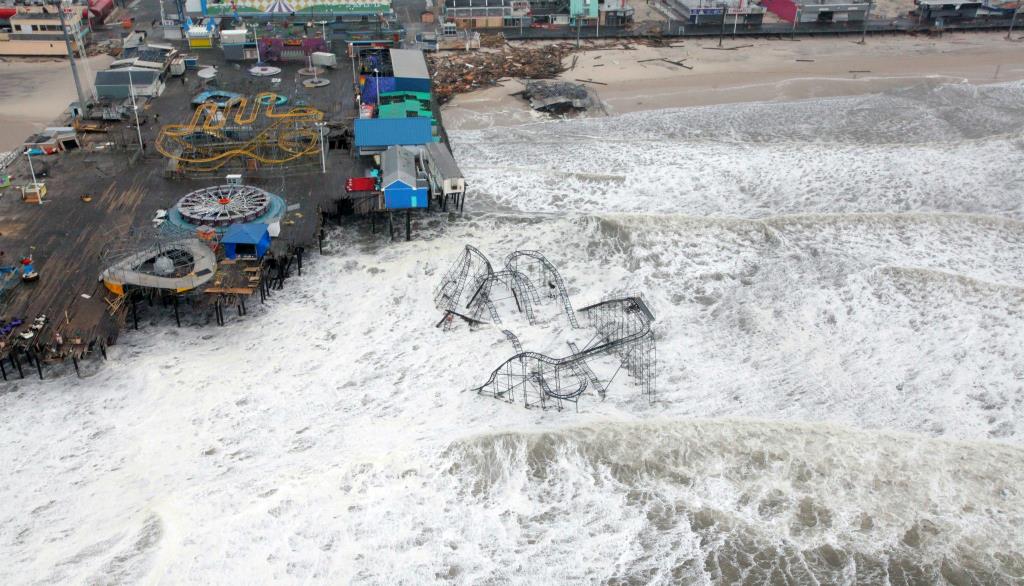On October 29, 2019, New Jersey Governor Phil Murphy marked the seventh anniversary of Superstorm Sandy by signing Executive Order No. 89 to establish a Statewide Climate Change Resilience Strategy. The Order took effect immediately.
The Executive Order also establishes a Climate and Flood Resilience Program within the New Jersey Department of Environmental Protection, which will be led by a Chief Resilience Officer.
“Since taking office, it has been a top priority of my Administration to reestablish New Jersey’s role as a leader in the fight against climate change and resume many of the climate change initiatives that were dismantled by the Christie Administration,” said Governor Murphy.
“New Jersey is extremely vulnerable to the impacts of sea-level rise and global warming, and today’s Executive Order outlines a bold and comprehensive set of actions to ensure that our communities and infrastructure are more resilient against future storms,” he added.
Additionally, the Executive Order (EO) creates an Interagency Council on Climate Resilience, comprising 16 state agencies to develop short- and long-term action plans that will promote the long-term mitigation, adaptation, and resilience of New Jersey’s economy, communities, infrastructure, and natural resources.
“Factoring climate change into housing rehabilitation efforts in New Jersey is critical because natural disasters are inevitable and unavoidable,” said Lt. Governor Sheila Oliver, who serves as Commissioner of the Department of Community Affairs.
“What we can control is how we prepare and plan for the future by rebuilding homes and businesses that are less prone to flood damage and more resilient,” she continued.
Among the directives to improve New Jersey’s climate resilience, the EO establishes:
State of New Jersey Chief Resilience Officer ̶ The Chief Resilience Officer of the State of New Jersey will lead the Climate and Flood Resilience Program and work with the Interagency Council on Climate Resilience to develop a Statewide Climate Change Resilience Strategy.
Climate and Flood Resilience Program ̶ The Climate and Flood Resilience Program will be established within the New Jersey Department of Environmental Protection. The Climate and Flood Resilience Program, under the direction of the Chief Resilience Officer, will develop a scientific report on climate change regarding the current and anticipated effects of climate change in New Jersey, including but not limited to increased temperatures, sea level rise, increased frequency or severity of rainfall, storms, and flooding, at least through 2050. This report will be delivered to the Governor within 180 days and updated at least every two years.
Interagency Council on Climate Resilience ̶ The Interagency Council on Climate Resilience will be established and comprising representatives of 16 state agencies to develop short- and long-term action plans to develop a Statewide Climate Change Resilience Strategy that will promote the long-term mitigation, adaptation, and resilience of New Jersey’s economy, communities, infrastructure, and natural resources.
Statewide Climate Change Resilience Strategy ̶ By September 1, 2020, the Chief Resilience Officer, with the support of the Interagency Council on Climate Resilience, will deliver to the Governor a Statewide Climate Change Resilience Strategy to promote the long-term mitigation, adaptation, and resilience of New Jersey’s economy, communities, infrastructure, and natural resources throughout the State in a manner consistent with the Scientific Report on Climate Change.
“As a coastal state, New Jersey is on the front lines of climate change. The impacts of climate change are far-ranging and already touch on everyone’s life in one way or another,” said Department of Environmental Protection Commissioner Catherine R. McCabe.
“The DEP is grateful for Governor Murphy’s leadership and support as we continue to promote climate resilience throughout the state. In the coming months, DEP will expand this work in collaboration with our sister agencies and, within the next year, deliver the Coastal Resilience Plan as part of Statewide Climate Change Resilience Strategy,” she explained.
The strategy will include recommendations for actions the State should take to mitigate and adapt to climate change, including:
- Identify methods that can be used to strengthen resilience;
- Provide guidance and strategies for State agencies, municipalities, and regional planning agencies to implement resilience measures;
- Promote long-term water and energy resource security;
- Reduce the risk of wildfires in State forests;
- Reduce the risks to the health of New Jersey residents that accompany climate change, such as increased vulnerability to extreme temperatures;
- Support sustainable and resilient economic development;
- Identify funding mechanisms, strategies, and opportunities for coordination; and
- Any other measures necessary to prepare for, mitigate, and adapt to the impacts of climate change.
The strategy shall also include a Coastal Resilience Plan that recommends a specific long-term strategy for climate change resilience and adaptation in the coastal areas of the state.
State Development and Redevelopment Plan ̶ The State Planning Commission, based upon the Scientific Report on Climate Change and the Statewide Climate Change Resilience Strategy, will incorporate climate change considerations, such as increasing temperatures, rising sea levels, increased flooding, and increased vulnerability to droughts and forest fires, as a mandatory requirement for State Development and Redevelopment Plan endorsement of the development and redevelopment plans of local units of government.
“We face many challenges from increasing temperature and sea-level rise,” said Chief Resilience Officer and Department of Environmental Protection Assistant Commissioner David Rosenblatt.
“To meet those challenges, we need to fully engage the public and stakeholders and provide a clear picture of what the impacts will be, including physical changes to our coastline, and the steps that have to be taken to adapt and become more resilient,” he concluded.
Featured photo (Master Sgt. Mark C. Olsen/U.S. Air Force/New Jersey National Guard) shows Sandy’s damage to Casino Pier in Seaside Heights, New Jersey.

